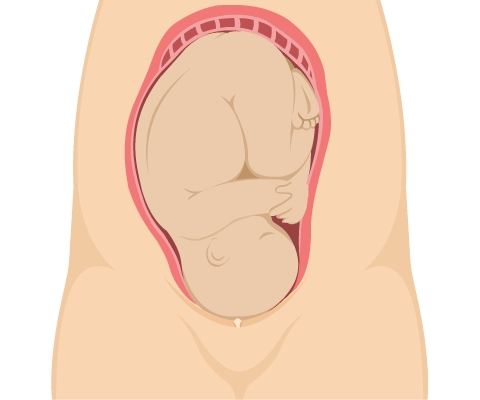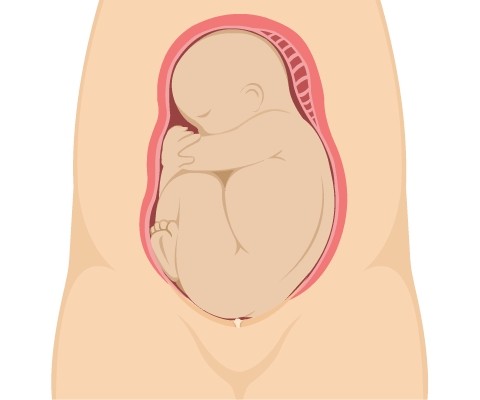Positions
Click on the links below and click on the thumbnails to view the images.
The baby may lie in cephalic, breech, or transverse position and may rotate around any of these positions so that the spine is on the left or right, or anterior or posterior.
The position of the baby can change throughout the course of the pregnancy and even while the ultrasound examination is being performed.
Cephalic presentation

| Fig 1 The baby is lying in cephalic presentation but with the spine to the maternal right |

| Fig 2 The baby is lying head down, in cephalic presentation, with the spine to the maternal left |
Breech presentation
If the baby is in breech presentation at the time of delivery, this increases the complication rate both for the mother and the baby. It is therefore important to confirm the fetal lie. Understanding the way the fetus is lying is also important when performing the ultrasound because this will determine how you position the probe to achieve the best images of the head, abdomen and heart.

Transverse presentation
Although the fetus can adopt a number of different positions in the early second trimester, a transverse lie is uncommon later in pregnancy. It may be seen in women who have had many pregnancies but is an indicator of a possible problem – especially a low lying placenta (placenta praevia). Tumours of the uterus, such as fibroids, can also cause an unusual fetal lie.
